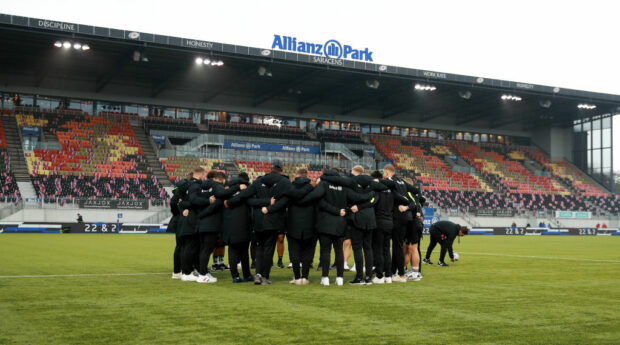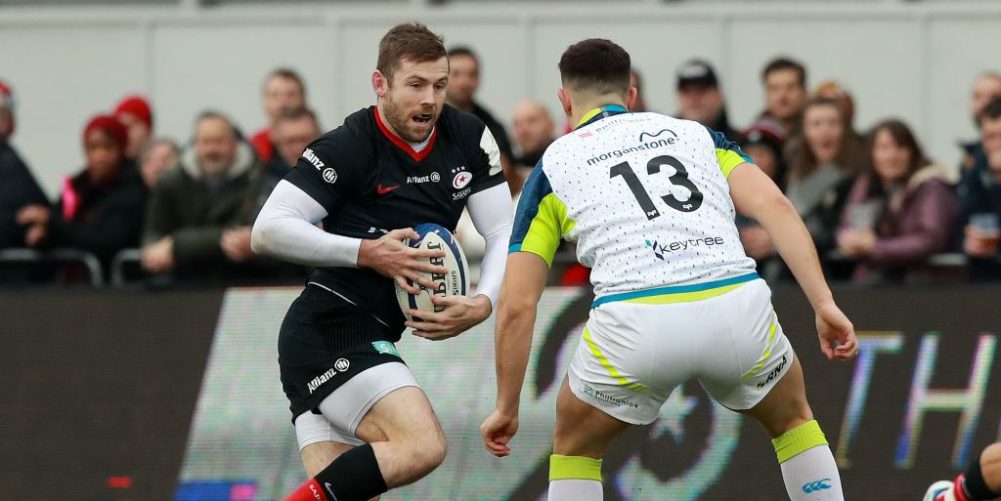WHETHER you take the view that Saracens have nobbled themselves, or have been nobbled by others jealous of their success, Europe’s champion club have crashed to earth.
It remains to be seen if the Premiership standard-bearers for the last six years burn in a funeral pyre which sees English rugby not only lose the one club it possesses capable of dominating the European Cup, but enters a barren landscape as also-rans for the foreseeable future.
If that is the case, Premiership Rugby will have lit its own bonfire of the vanities. In the process, they will have been aided and abetted by a Saracens administration which was complicit in the club’s downfall by laying itself open to a £5.36m fine and 35-points deduction for a salary cap breach.
It is the harshest punishment in Rugby Union annals, and one of the most swingeing in any sport, and yet one of the most veiled and inadequately explained there has ever been.
It has been extraordinarily destructive, bringing a premature end to the reign of an English club which claimed a second European and domestic double last season, having dominated not only the Premiership – winning four of the last five titles – but also the European Cup, in which they have won three of the last four finals.
Saracens are now 26 points behind 11th placed Leicester in the Premiership table, with a job on their hands, given their likely Six Nations call-ups, to avoid relegation.
The destruction was laid bare last weekend when a depleted Saracens were beaten 30-10 in Paris by Racing in Europe’s opening-round, giving them a mountain to climb if they are to defend their title in the knockout stage.
Saracens have been left in a parlous position thanks to a hopelessly timed and disastrously protracted Premiership Rugby legal process which threatened to wreck the season, and in which it eventually emerged that they had no effective right of appeal.
It was imperative that the Premiership Rugby investigation, which began 13 months ago, was concluded before the start of this season – especially when the Daily Mail published a story last March about the co-investment partnerships between the Saracens owner, Nigel Wray, and leading players, including Owen Farrell, Maro Itoje, and Mako and Billy Vunipola.
Instead, even though the potential disruption was so massive, it took until June before Premiership rugby brought a charge against Saracens. Then it took until the end of September, almost four months later, before Sports Resolutions – who had been brought in by Premiership Rugby to run the legal show – convened the disciplinary panel of legal heavyweights whose verdict was eventually made public on November 6.
The decision had been deferred a fortnight to prevent disruption to England‘s World Cup campaign. It is a great pity that similar damage limitation had not been considered months before the start of the Premiership season, with the legal verdict announced over the summer.

The only conclusion is that Premiership Rugby’s regulatory system and procedures are not fit for purpose, with charges relating to 2016 dragged into a disciplinary hearing in 2019.
There was also the complication of an apparent contradiction in the truncated 145-word summary of the disciplinary panel’s judgement. In it Saracens were exonerated of any “deliberate action to break the salary cap”, but, presumably because they were “reckless” in their accounting process, were still hit with the maximum penalty.
There has been conjecture that CVC, who have recently bought a share in the Premiership for over £200m, and also now employ former Premiership Rugby chief executive Mark McCafferty, may have made clear that they wanted the regulatory process to have teeth.
However, Saracens, rather than fight their corner on what they argued was a clear-cut “not guilty” appeal, prevaricated – and then on Monday, when the appeal had to be lodged, flip-flopped by pleading guilty.
You cannot help but wonder whether the decision had something to do with Wray spending last weekend in South Africa, as a guest at a birthday party hosted by former Saracens captain François Pienaar.
While he was in South Africa he could have bumped into some of his former co-owners at Remgro, the company owned by South African billionaire Johann Rupert.
Remgro had a 50 per cent stake in Saracens for nine years until April 2018, when Wray announced he had bought back the shares to take full control of the club. This means that the South African co-ownership was in place during 2016-17 and 2017-18, two of the financial years in which Saracens were found guilty of exceeding the salary cap.
If Remgro – who Wray described at the time of the buy-back as “a fantastic shareholder in Saracens”– were to make significant contribution to paying the £5m fine, it could have persuaded him not to contest it.
Either way, Wray’s decision to pay the fine will be seen in most quarters as an admission of guilt, irrespective of whether he argues Saracens did the wrong thing for the right reasons.
What we should care about is a growing disillusionment among people who support the game that far too much of what happens in pro rugby has become secretive, with major decisions concerning the sport taken in the shadowlands where big money and big business spin and weave.
Unfortunately, the tendrils of a clandestine, unaccountable culture now reach into the governance of the sport, where organisations like Premiership Rugby and the RFU have spawned regulatory systems that are locked-down in confidentiality clauses and non-disclosure agreements.
The salary cap system regulated by Premiership Rugby is outside the remit of English rugby’s governing body, the RFU, and yet double standards abound. For instance, most of the clubs who have just insisted on Saracens being slammed for playing fast and loose with a voluntary salary cap, are doing everything in their power to curtail the ambitions of clubs in the leagues below them by ring-fencing the top league.
The Premiership clubs have also recently introduced a salary cap amendment allowing the two highest paid players in each club to be removed from it. If a salary cap is meant to be controlling wage expenditure in order to keep a relatively level playing field, where does that fit in?
What if one club can afford to pay salaries of, say, £3m a year to each of its two marquee players were another can only afford £500,000 each for its two? It means that one team can spend £6m more on salaries, and another only £1m.
Hardly a level playing field, and not a pro game which can call itself in any way open and transparent. It is time that culture changed, or it will throttle this sport’s progress.
NICK CAIN























